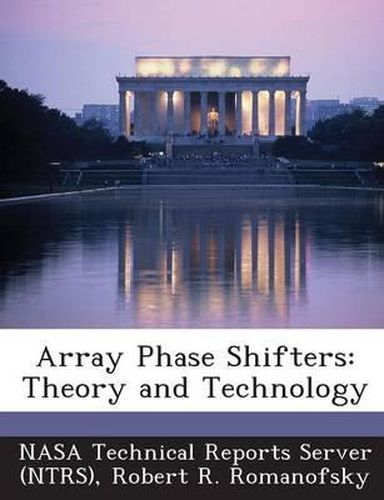Readings Newsletter
Become a Readings Member to make your shopping experience even easier.
Sign in or sign up for free!
You’re not far away from qualifying for FREE standard shipping within Australia
You’ve qualified for FREE standard shipping within Australia
The cart is loading…






While there are a myriad of applications for microwave phase shifters in instrumentation and metrology, power combining, amplifier linearization, and so on, the most prevalent use is in scanning phased-array antennas. And while this market continues to be dominated by military radar and tracking platforms, many commercial applications have emerged in the past decade or so. These new and potential applications span low-Earth-orbit (LEO) communications satellite constellations and collision warning radar, an aspect of the Intelligent Vehicle Highway System or Automated Highway System. In any case, the phase shifters represent a considerable portion of the overall antenna cost, with some estimates approaching 40 percent for receive arrays. Ferrite phase shifters continue to be the workhorse in military-phased arrays, and while there have been advances in thin film ferrite devices, the review of this device technology in the previous edition of this book is still highly relevant. This chapter will focus on three types of phase shifters that have matured in the past decade: GaAs MESFET monolithic microwave integrated circuit (MMIC), micro-electromechanical systems (MEMS), and thin film ferroelectric-based devices. A brief review of some novel devices including thin film ferrite phase shifters and superconducting switches for phase shifter applications will be provided. Finally, the effects of modulo 2 phase shift limitations, phase errors, and transient response on bit error rate degradation will be considered.
$9.00 standard shipping within Australia
FREE standard shipping within Australia for orders over $100.00
Express & International shipping calculated at checkout
While there are a myriad of applications for microwave phase shifters in instrumentation and metrology, power combining, amplifier linearization, and so on, the most prevalent use is in scanning phased-array antennas. And while this market continues to be dominated by military radar and tracking platforms, many commercial applications have emerged in the past decade or so. These new and potential applications span low-Earth-orbit (LEO) communications satellite constellations and collision warning radar, an aspect of the Intelligent Vehicle Highway System or Automated Highway System. In any case, the phase shifters represent a considerable portion of the overall antenna cost, with some estimates approaching 40 percent for receive arrays. Ferrite phase shifters continue to be the workhorse in military-phased arrays, and while there have been advances in thin film ferrite devices, the review of this device technology in the previous edition of this book is still highly relevant. This chapter will focus on three types of phase shifters that have matured in the past decade: GaAs MESFET monolithic microwave integrated circuit (MMIC), micro-electromechanical systems (MEMS), and thin film ferroelectric-based devices. A brief review of some novel devices including thin film ferrite phase shifters and superconducting switches for phase shifter applications will be provided. Finally, the effects of modulo 2 phase shift limitations, phase errors, and transient response on bit error rate degradation will be considered.